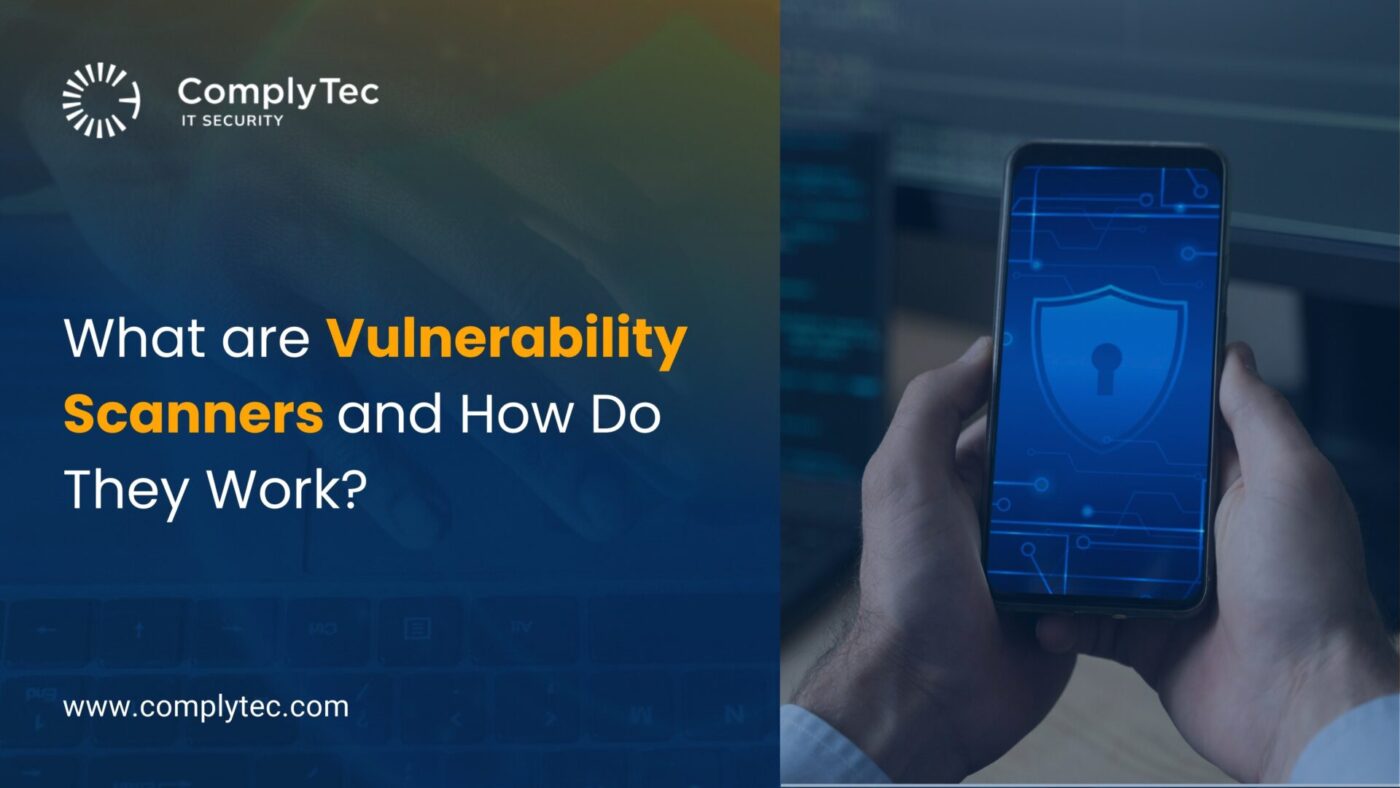The surge in cyberattacks in recent years has reached alarming levels, and they pose the most significant threat to data-driven organizations. According to Security Magazine, over 2,200 cyberattacks take place every day, which equates to one cyberattack every 39 seconds!
That is not all; according to the State of Software Security report, over 76% of applications have at least one vulnerability. These alarming numbers emphasize the urgency for organizations to prioritize cybersecurity measures. In this context, vulnerability scanners emerge as a proactive tool enabling organizations to stay one step ahead of potential security threats. In this article, we will explore the topic of vulnerability scanners, including what they are, how they benefit your organization, the various types of vulnerability scanners, and how they function.
What are Vulnerability Scanners?
Let us begin by understanding vulnerability scanners. Before we start, it is crucial to understand that vulnerability scanning is one aspect of vulnerability management wherein your organization’s networks, applications, drives, etc., are scanned to detect potential threats or vulnerabilities. Vulnerability scanning is often considered an initial step of the vulnerability management process.
Vulnerability scanners themselves are tools that enable organizations to identify any threat or vulnerability across assets, applications, or networks. These vulnerabilities could pose as outdated software or misconfigurations within a system. The tool informs security teams of vulnerabilities that could be exploited through a cyberattack or a data breach. By doing so, these teams can strengthen their security posture. Let us understand how these scanners function.
How Do Vulnerability Scanners Work?
Many organizations and professionals ask a common question – how do vulnerability scanners work? The mechanism of vulnerability scanning software or scanners is relatively simple. It deploys a scanning process that can be understood in five phases:
- Discovery: The first phase of vulnerability scanning is when the vulnerability scanner or software scans your organization’s network to identify all connected devices and systems. Once done, the security scanning tool will create an inventory of all assets that exist within these networks. With accurate asset information, your organization can prioritize assets based on their business impact.
- Detection: In their second phase, vulnerability scanners carry out thorough scans of the assets belonging to a specific network to detect liabilities or threats. These scanners then compare the findings with a comprehensive database containing common vulnerabilities such as system misconfigurations, insider threats, or software malfunctions to recognize and categorize the vulnerabilities found.
- Assessment: After thoroughly scanning networks, devices, and systems, vulnerability scanners assess the vulnerabilities based on the assets they are associated with, in relation to how critical those assets are, the policies that govern the affected systems, the behavior or the affected users and compliance to standards. Vulnerabilities are then categorized based on the risk they pose to the organization. By doing so, organizations can prioritize the order in which vulnerabilities are eliminated or mitigated.
- Remediation: Elimination and mitigation of vulnerabilities can come in the form of updating software, applying access controls, fixing system configurations, and applying patches wherever necessary. Security professionals or a dedicated security team usually carry out these actions. However, if your organization opts for an automated vulnerability scanner, it may have advanced features such as automated remediation processes and threat intelligence capabilities.
Vulnerability scanners gather data from their scans to create detailed reports on existing and potential vulnerabilities and their associated severities. With these reports, your organization will gain complete visibility into its security posture and utilize it to bolster its security policies.
While vulnerability scanners enable your organization to detect threats and vulnerabilities at a glance, they may not be able to provide your organization with a robust security strategy. Hence, your organization must combine the usage of online vulnerability scanners with a full-fledged vulnerability management platform or software.
Let us move on to understanding the type of vulnerability scanner your organization will need based on its security requirements.
Types of Vulnerability Scanners
If your organization is looking to invest in a vulnerability scanner, you must identify what kind of scanner you might require. Each scanner caters to a specific scenario with varying security measures. Understanding the various types of vulnerability scanners will help your organization choose the best one based on its security requirements. Here are the various types of vulnerability scanners:
Database Vulnerability Scanner
Your organization’s database stores crucial business information and sensitive data. In a cyberattack or data breach scenario, hackers will try to steal or leak these sensitive data sources, causing irreparable damage to your organization. Database vulnerability scanners scan your organization’s databases to recognize any vulnerabilities or threats that hackers could exploit, such as weak data encryption or lack of access controls.
Wireless Vulnerability Scanner
Wireless vulnerability scanners assist in scanning your organization’s wireless networks to detect malicious devices connected to your network, use of weak passwords, proper network configuration, and defenseless access points that could be exploited.
Application Vulnerability Scanner
Web applications and website codes may have existing vulnerabilities and misconfigurations. Application vulnerability scanners help detect these vulnerabilities in applications’ source codes so that your organization can take appropriate measures to protect them. Below, we describe three kinds of application vulnerability scans:
- Dynamic Application Security Testing: This is when scanners detect unknown vulnerabilities that may be found through front-end of web applications by simulating attacks. This is an “outside-in” approach to scanning.
- Static Application Security Testing: This is when the source codes of applications are tested during their developmental stages. This is an “inside out” approach to scanning.
- Interactive Application Security Testing: This type of testing analyzes code for vulnerabilities while the application is in the process of being used, either by a human, a testing application, or any activity that results in an interaction with that application. This type of testing is usually done in a QA environment.
Host-Based Vulnerability Scanner
Host-based vulnerability scanners identify vulnerabilities within different hosts, such as servers. They can also detect vulnerabilities within a single system or devices connected to a single network.
Network-Based Vulnerability Scanner
Network-based vulnerability scanners detect vulnerabilities within your organization’s networks, such as liable devices, weak web servers, and systems. They utilize published and known vulnerability databases, such as Common Vulnerabilities and Exposures (CVEs) and the National Vulnerability Database (NVD), to verify and confirm potential vulnerabilities within a network.
Selecting a vulnerability scanner depends on the kind of data environment your organization wishes to prioritize. If your organization wants to deploy a vulnerability scanner immediately, you can look up security scanning tools online or even opt for an open-source vulnerability scanner. However, it is advisable to complement these scanners with advanced vulnerability scanning software or a vulnerability management platform to optimize your security measures.
Benefits of Vulnerability Scanners
Vulnerability scanners are highly beneficial for organizations looking to strengthen existing security measures or to develop security policies based on their security flaws. Here are the benefits of vulnerability scanners and why they are essential for your organization:
Mitigates Security Flaws
A critical benefit of online vulnerability scanners is their ability to detect emerging and potential threats within the organization’s security systems. When organizations detect these vulnerabilities early on, they can stay ahead of hackers and take proactive steps to mitigate or remediate the risks before they breach the data and cause hazardous damage to the organization.
Boosts Security Measures
Using website vulnerability scanners enables organizations to gain complete and comprehensive visibility into their security efforts. It also helps them detect changes in data environments, networks, applications, and systems, alerting the organization to develop appropriate action plans to protect business-critical data from unauthorized access, misuse, or loss. These action plans contribute to boosting your organization’s overall security efforts effectively.
Enhances Data Protection
A critical aspect of your organization’s security policies must include data protection measures to protect sensitive business data. With the increase in data loss due to cyber attacks, many industries have laid out several regulatory policies and compliance standards that one must adhere to. Vulnerability scanners help identify if sensitive data sources are secure and cannot be breached by any third party or unauthorized personnel. They also detect if these data sources are at risk, alerting your organization’s security teams to take prompt action to secure them.
Saves Time and Money
Data breaches and cyberattacks cause severe damage to organizations due to the hefty legal fees levied on them. Moreover, organizations also spend a lot of time, sometimes even months, retrieving lost data and mitigating risks posed by sensitive data sources. Within this context, vulnerability scanners help save money and time by scanning various data environments to pinpoint and prioritize any kind of security liability that the organization might contain.
Maintains Credibility
When an organization is upfront and honest about its security measures and policies, customers, partners, stakeholders, and employees are more likely to trust and value them. Vulnerability scanners help your organization maintain credibility by securing networks, devices, applications, etc. They do so by conducting continuous and regular scans of their data landscape to recognize emerging vulnerabilities. Moreover, they maintain detailed reports based on the data they collect during these scans, providing stakeholders with transparency concerning their security posture. This also helps your organization demonstrate accountability to its customers, employees, and stakeholders.
Your organization can revamp its security posture by deploying online vulnerability scanners. If your organization wants to experiment before investing in a scanner, it can always opt for an open-source or a website vulnerability scanner. We have covered in detail what vulnerability scanners are, how they work, the types of vulnerability scanners, the critical benefits of vulnerability scanners, and why your organization must utilize them. So, what are you waiting for? Let us embark on this journey to secure our data together!
Empower Your Security Teams with ComplyTec
Meet ComplyTec, your organization’s trusted partner for vulnerability management! We partner with your security team to curate cybersecurity solutions that strengthen protection against threats and vulnerabilities based on your organizational needs.
ComplyTec has provided IT solutions to various North American organizations, including Blue-chip companies and government agencies. We bring vulnerability management and security expertise to your organization while enhancing its operational efficiency.
Your Security Partner for Success – ComplyTec!
Contact Us
FAQs
1. What are vulnerability scanners?
Vulnerability scanners are tools that scan your organization’s systems such as devices, networks, and hosts, to reveal any threats, liabilities, and vulnerabilities that may jeopardize your organization’s security posture.
2. Why do we need vulnerability scanners?
Online vulnerability scanners can detect vulnerabilities and risks before malicious attackers use them to steal or leak your organization’s sensitive data. They also maintain a record of previously mitigated vulnerabilities and potential threats to alert your organization to take immediate action to secure critical data sources. Moreover, your organization can also use these scanners to maintain and streamline its overall security efforts.
3. What are internal vulnerability scanners?
Internal vulnerability scanners are tools that help organizations conduct vulnerability scanning within the organization’s networks and data environments to examine them for any liabilities or loopholes that third parties can exploit. On the other hand, external vulnerability scans refer to scanning processes conducted from an outsider’s perspective by detecting external risks to the organization’s networks and devices. Your organization can opt for a commercial vulnerability scanner that employs both scans to enhance security protocols.
4. What kind of vulnerability scanner does my organization require?
Your organization can opt for an open-source vulnerability scanner or a commercial vulnerability scanner based on the type of data environment you want to prioritize. There are five types of vulnerability scanners based on various data environments — network-based vulnerability scanner, host-based, application, database, and wireless scanners. If your organization is looking for a scanner for a trial basis, you can look for vulnerability scanning tools free and make use of those tools.
5. What are the limitations of vulnerability scanners?
There are a few limitations of vulnerability scanners that may compel your organization to seek out alternative security scanning tools. These limitations include reporting a vulnerability when it doesn’t exist, lack of contextual knowledge when detecting a vulnerability, and limited scope of remediation practices.



